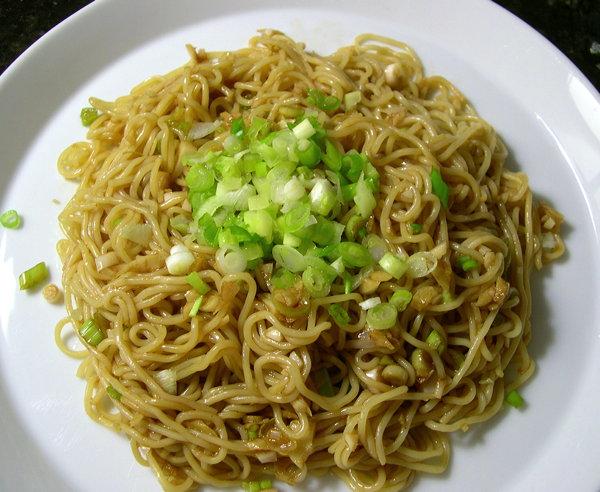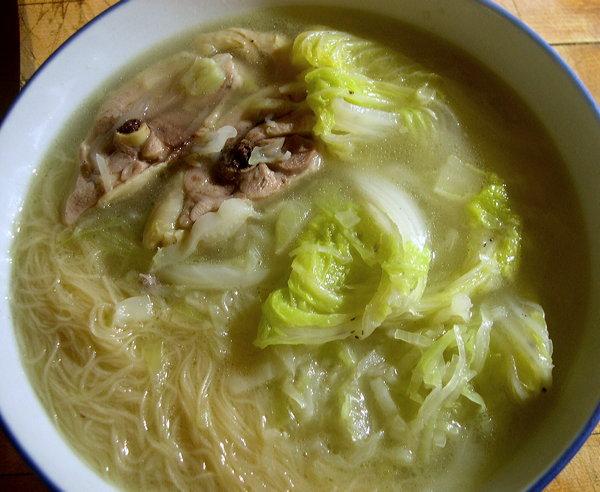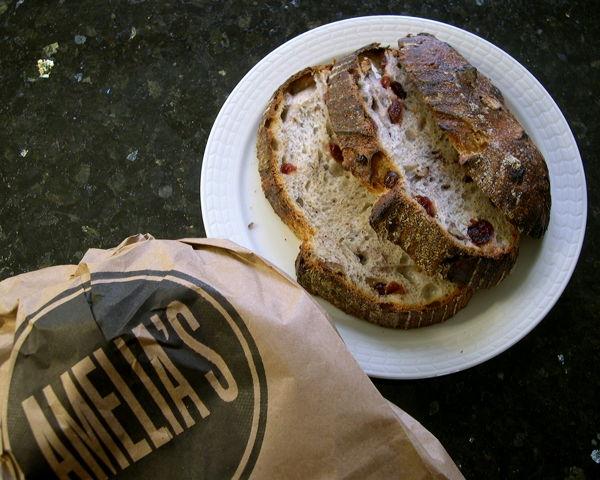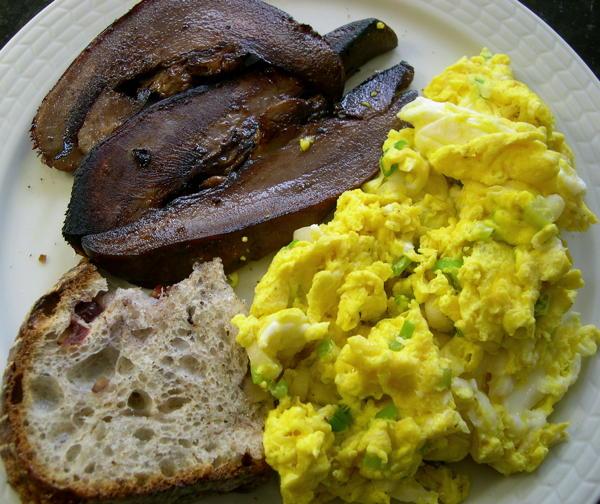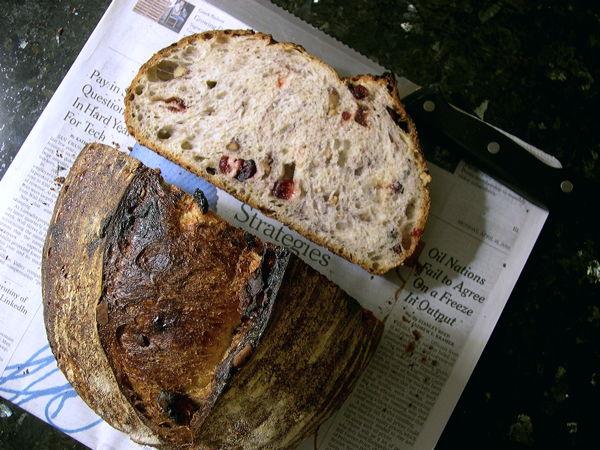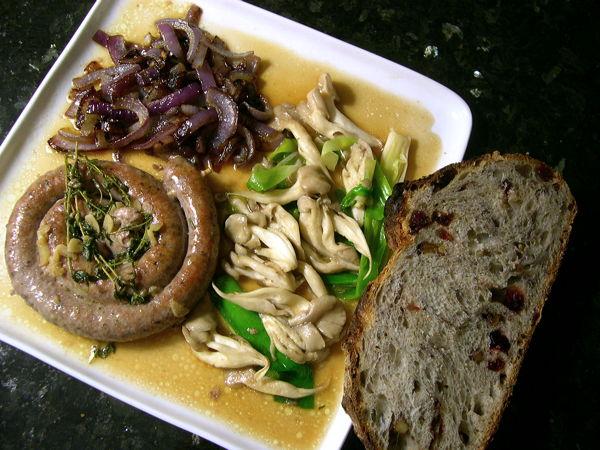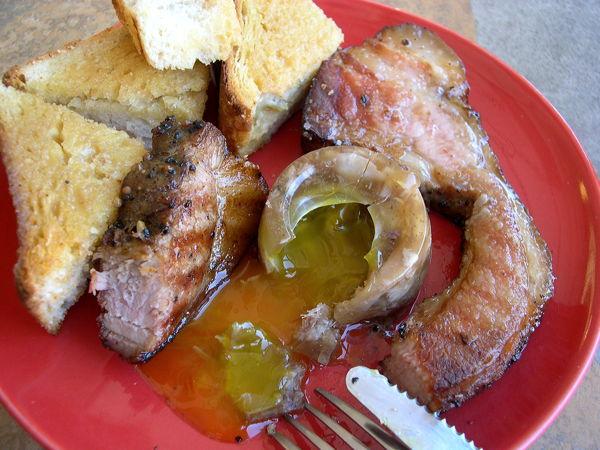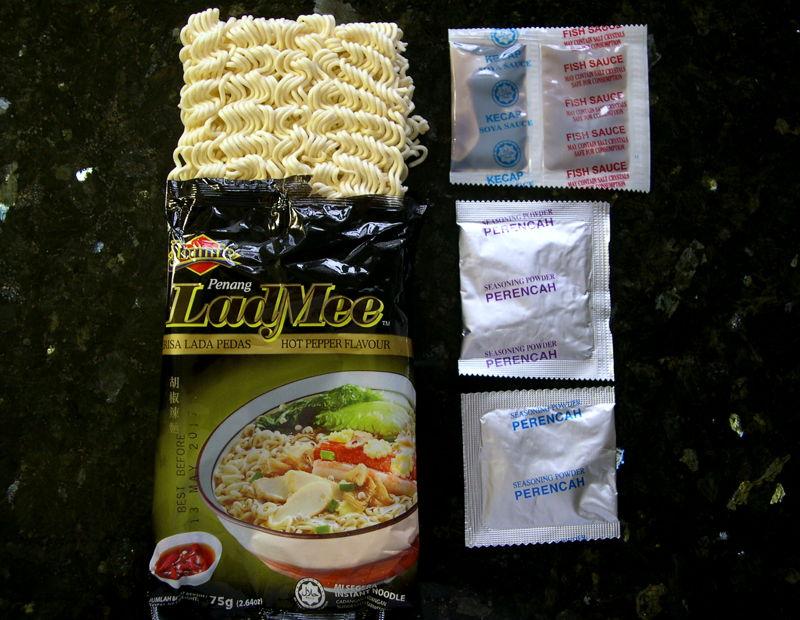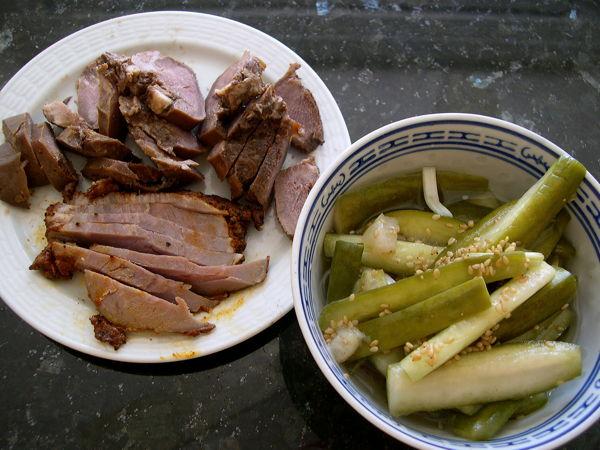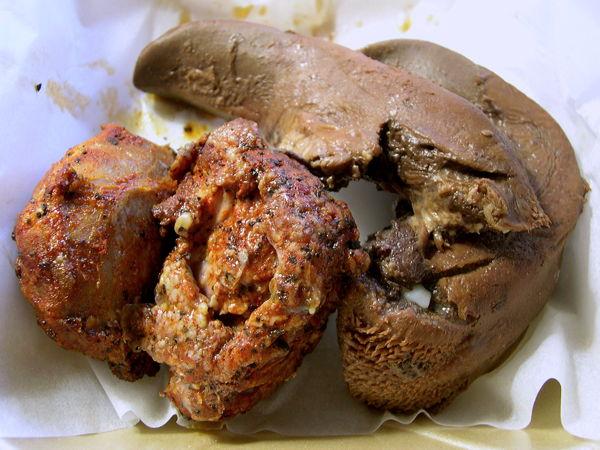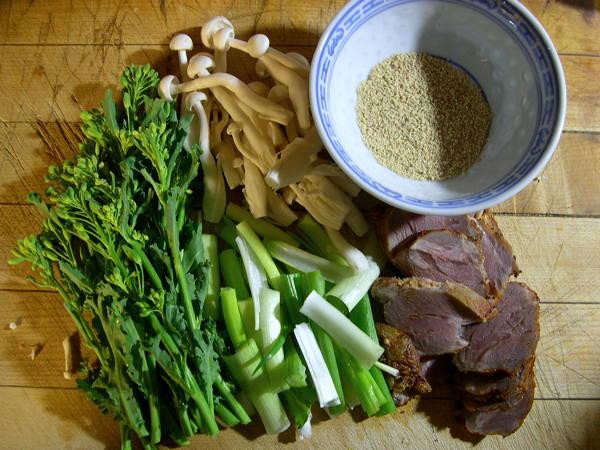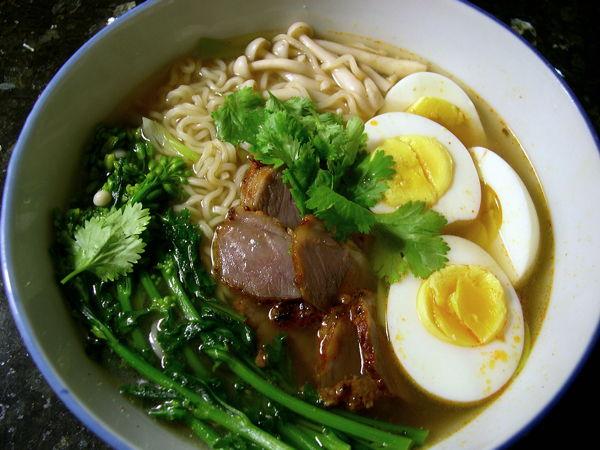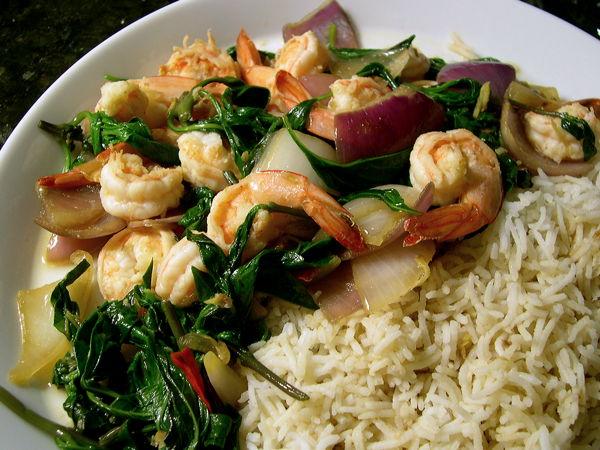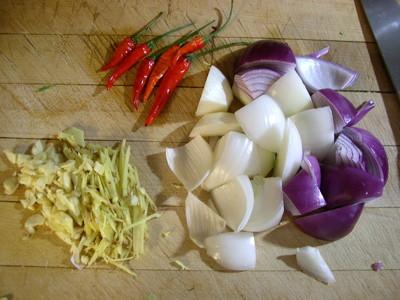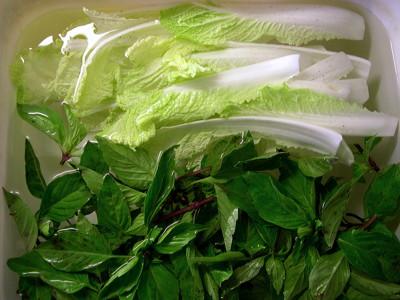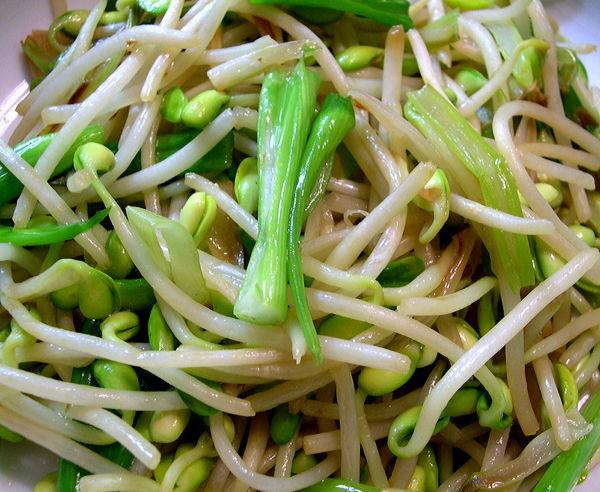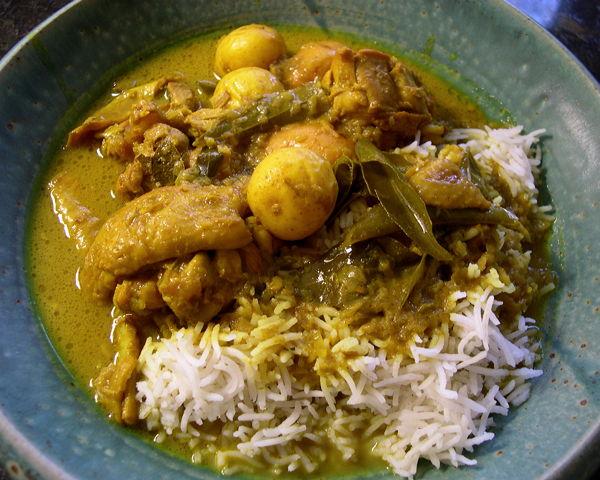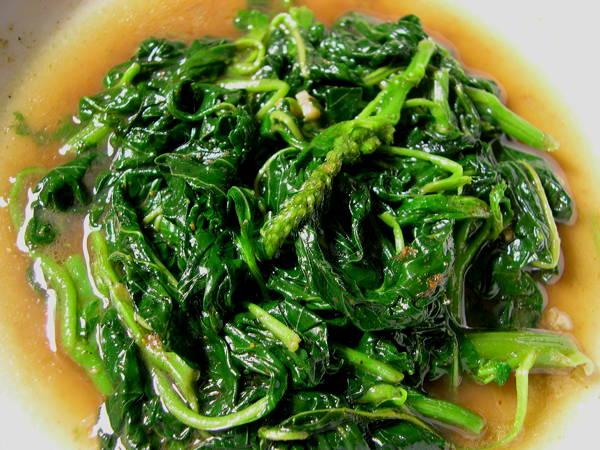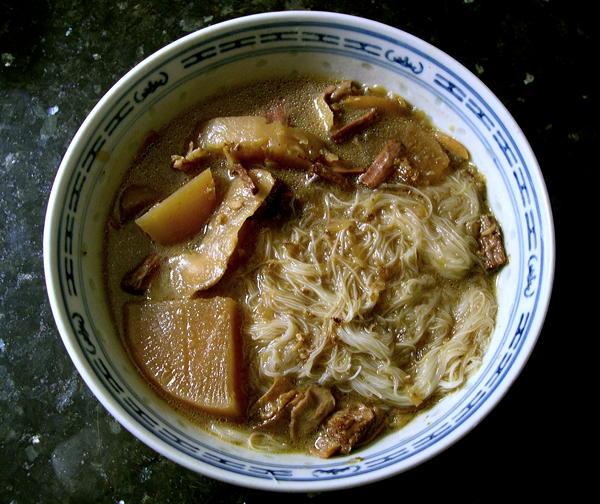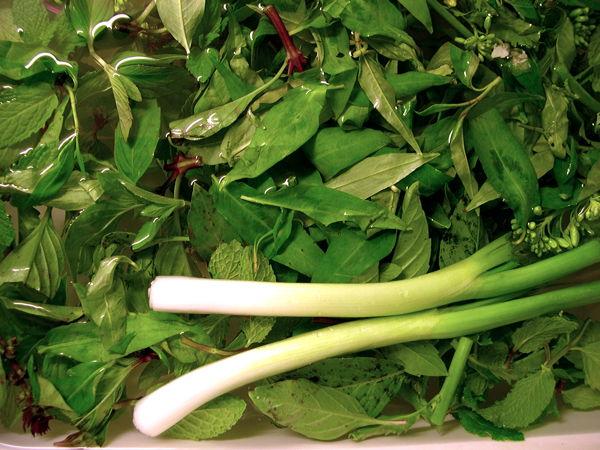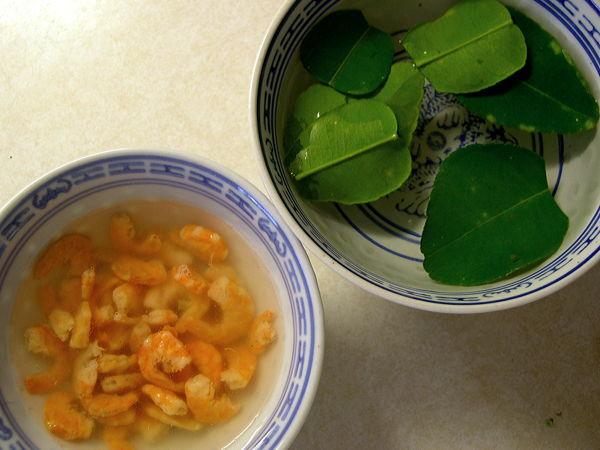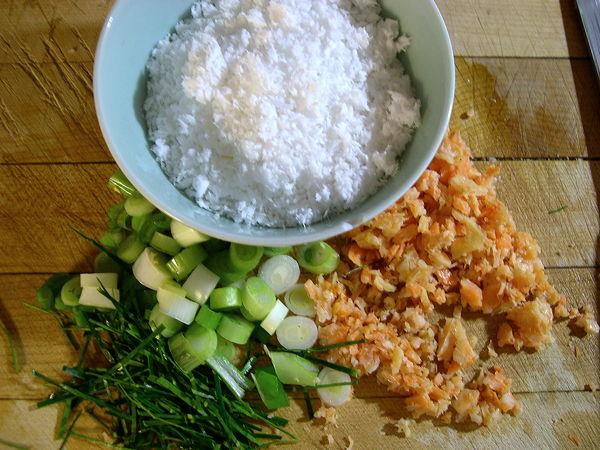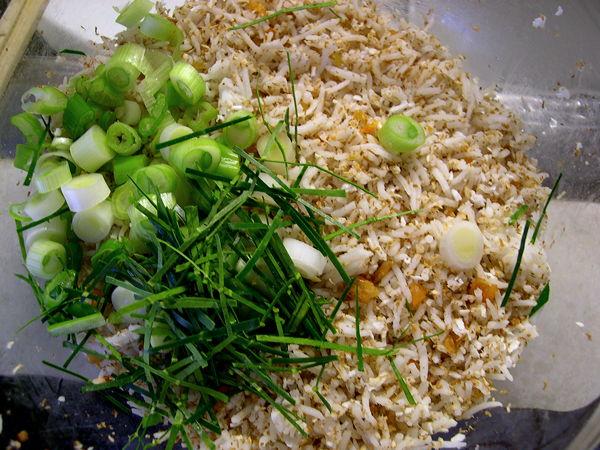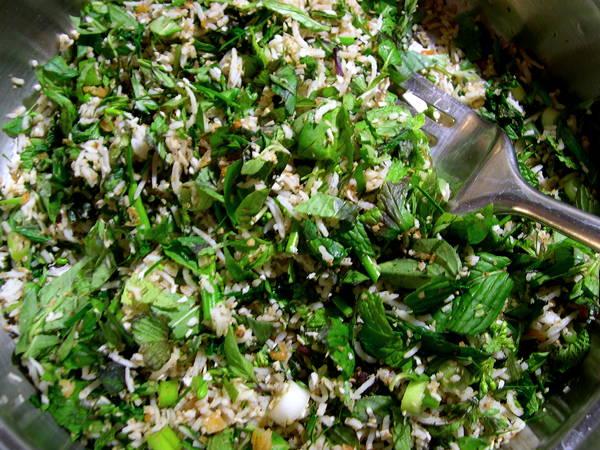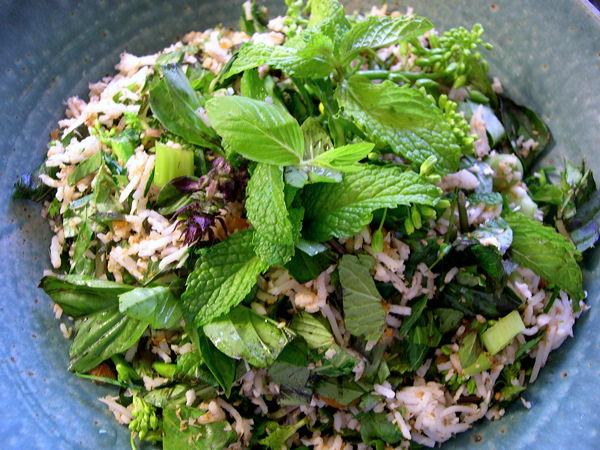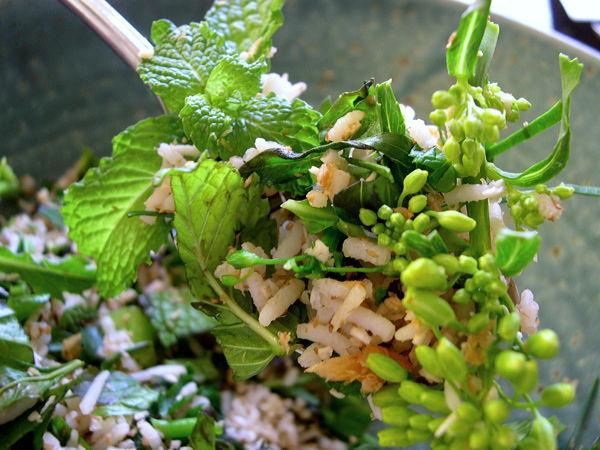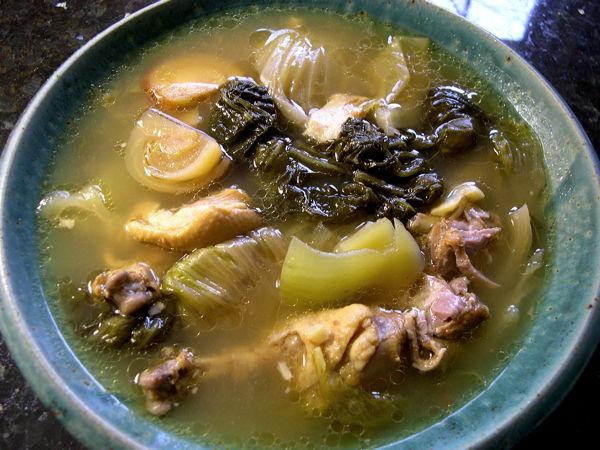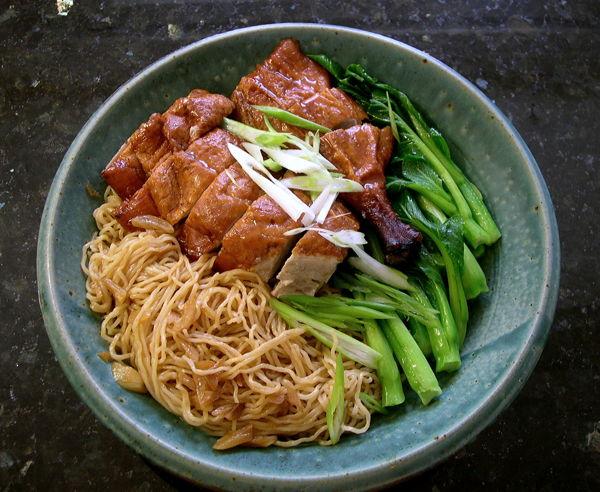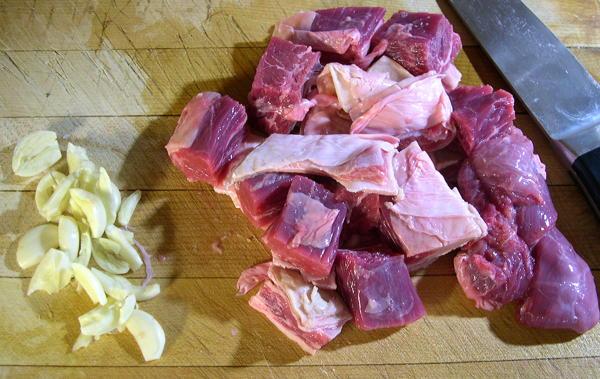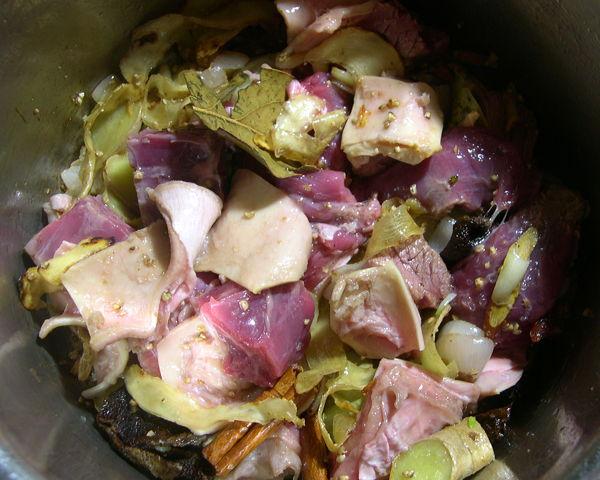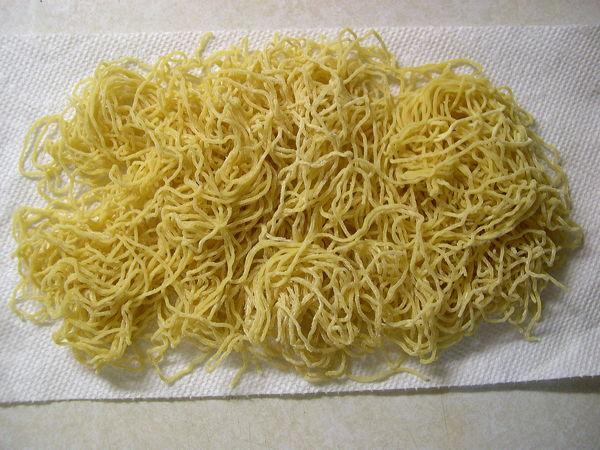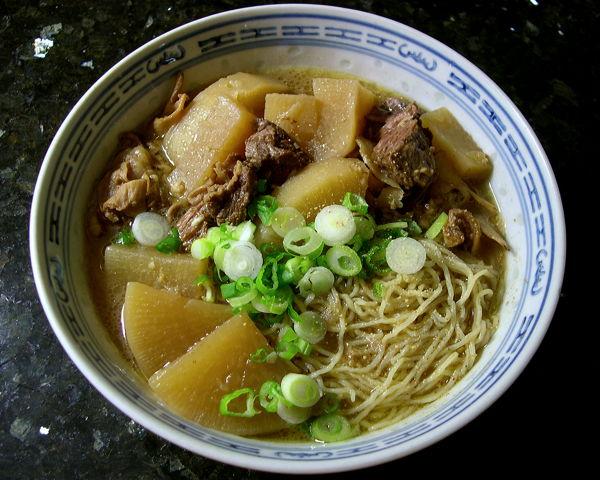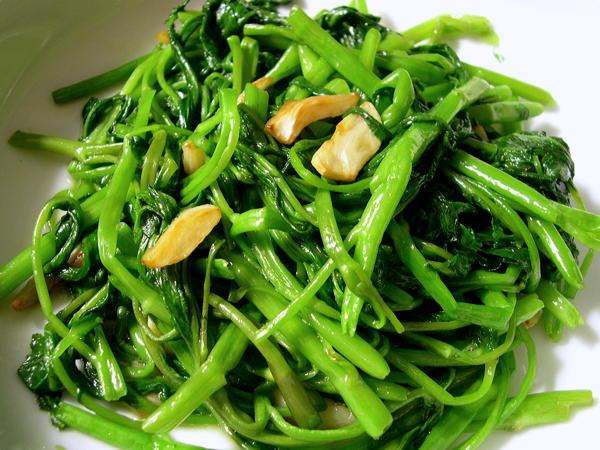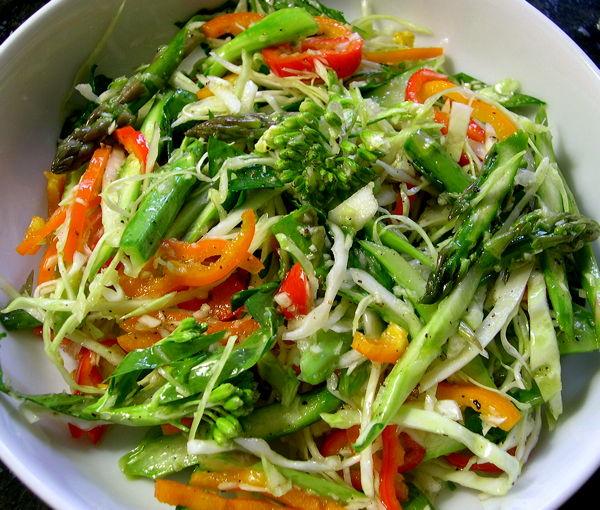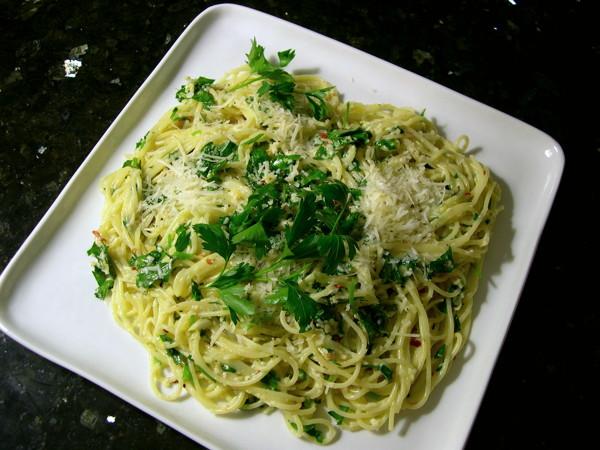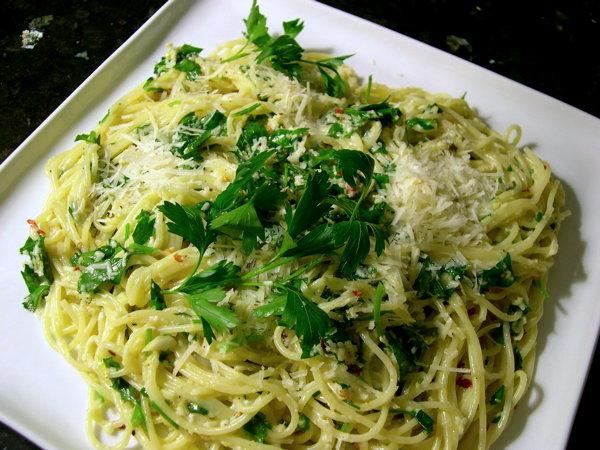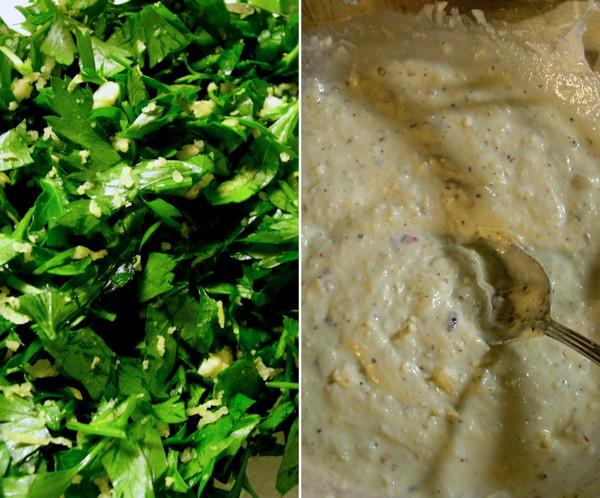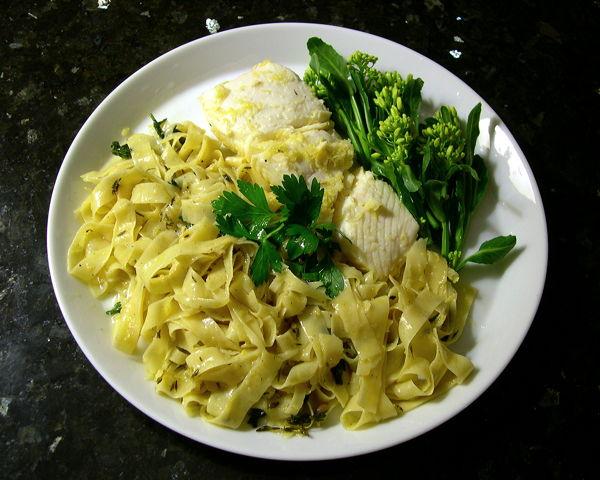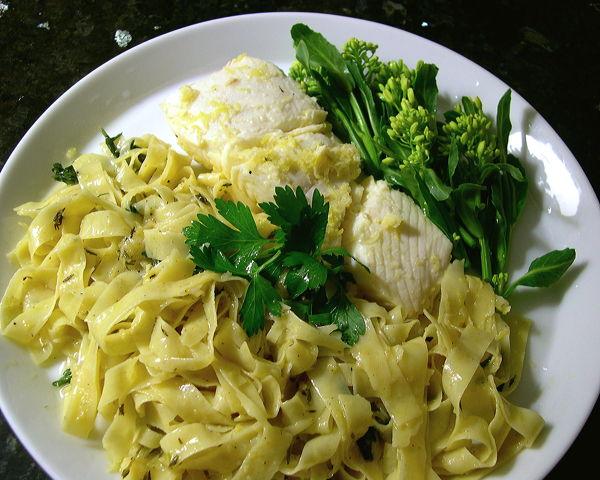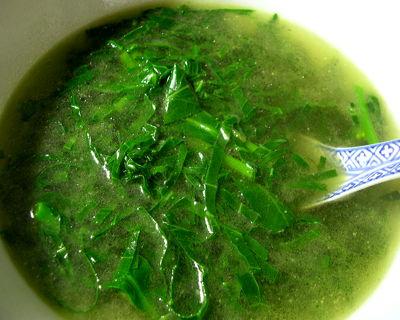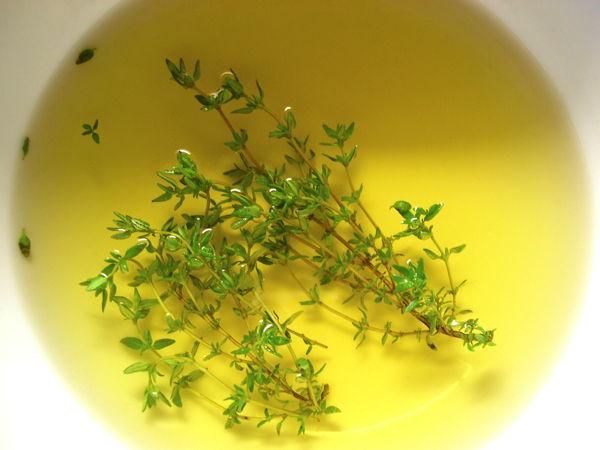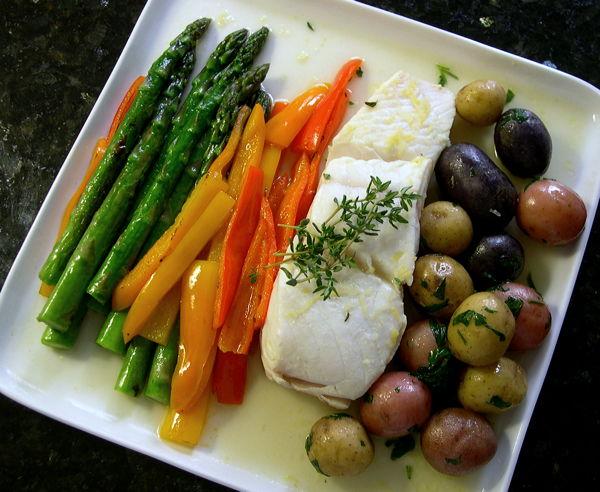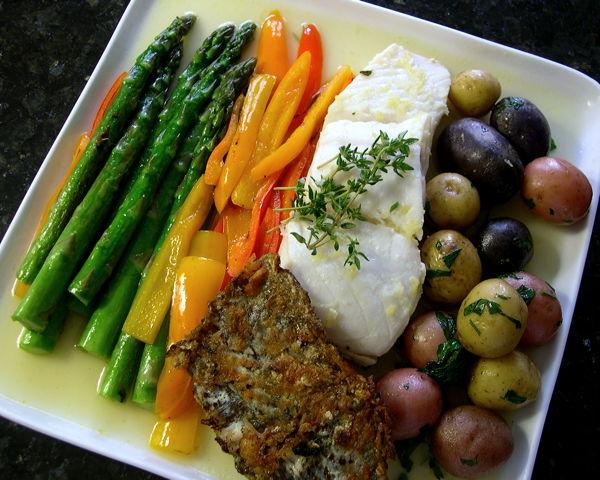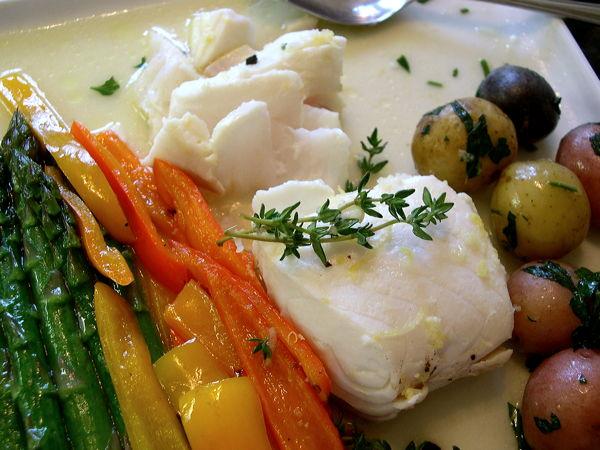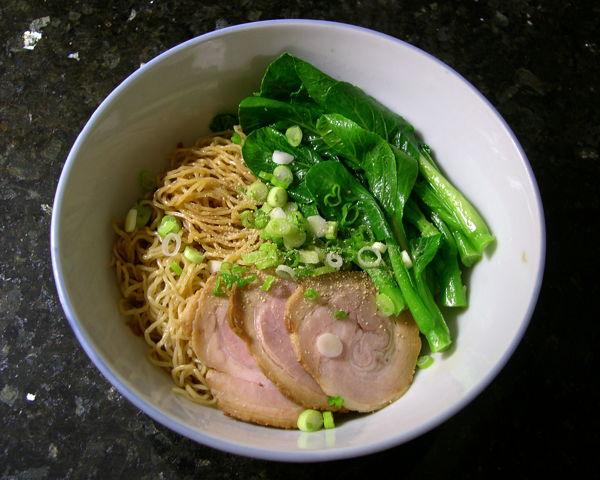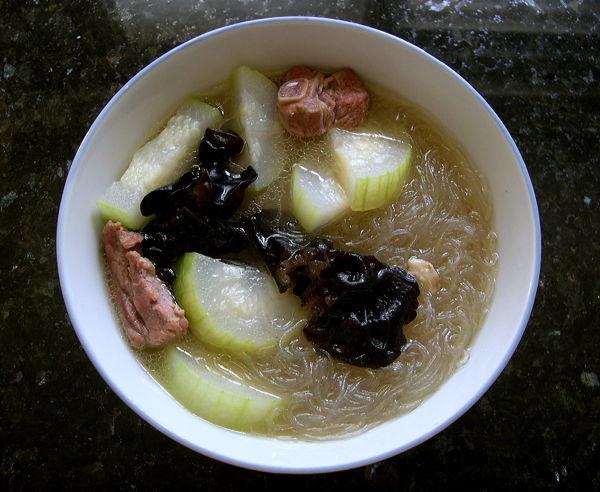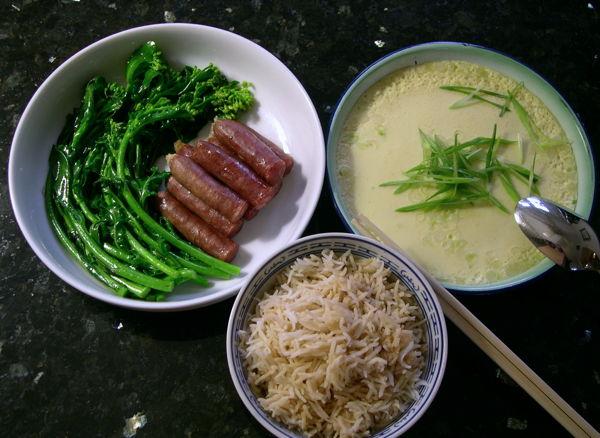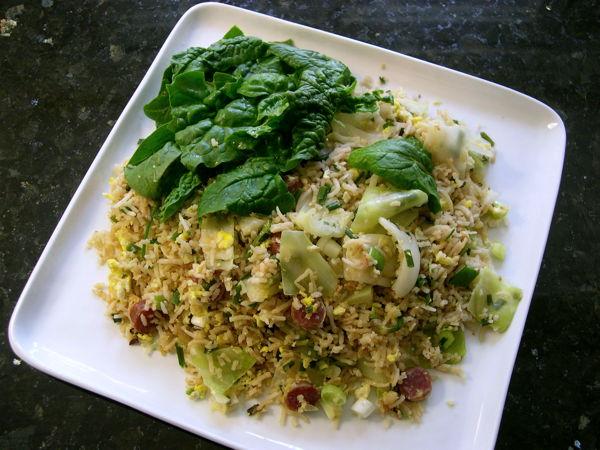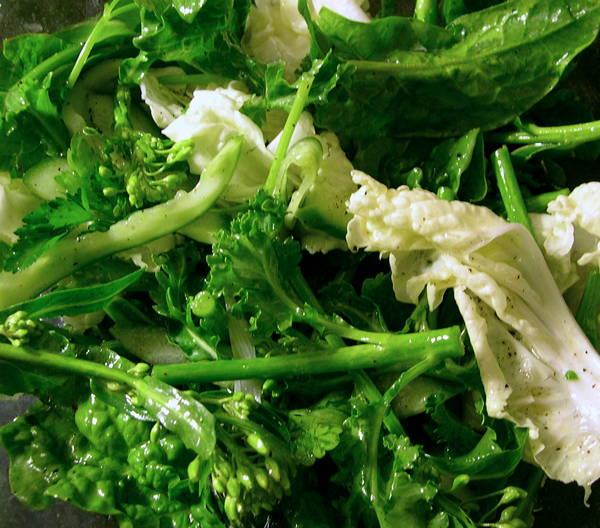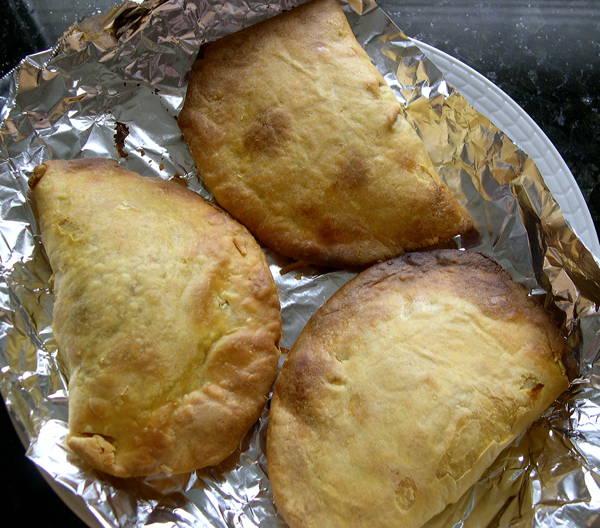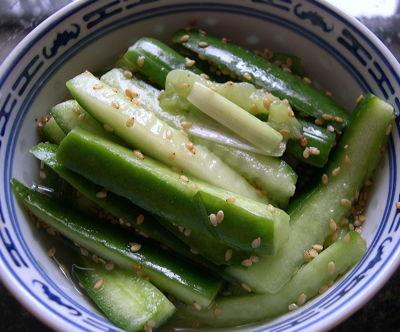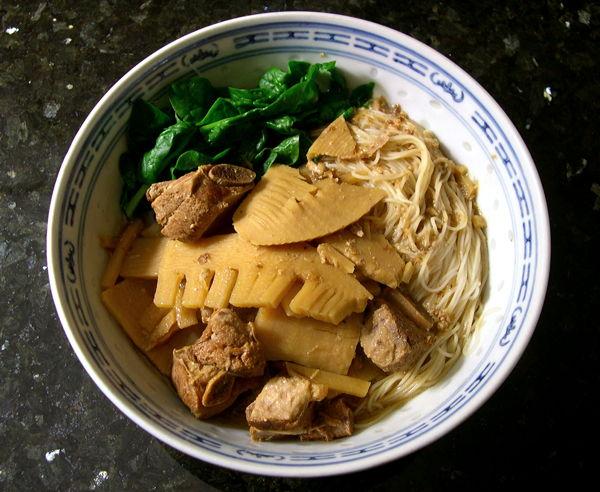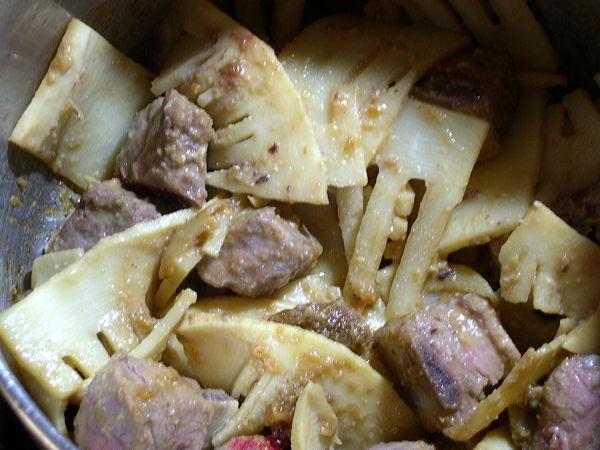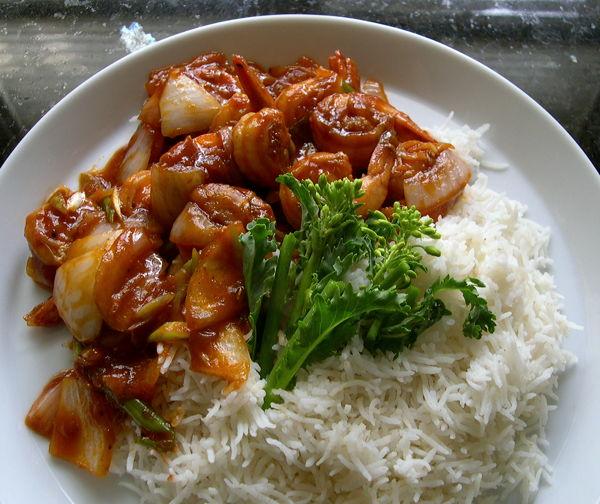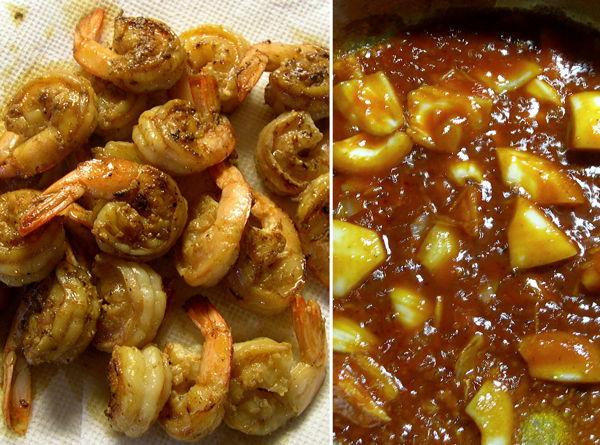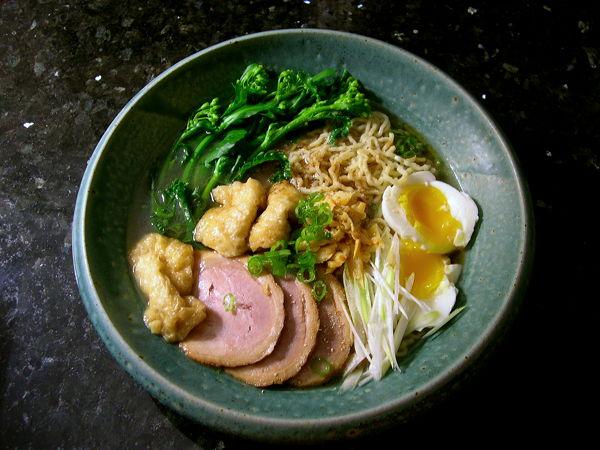-
Posts
3,810 -
Joined
-
Last visited
Content Type
Profiles
Forums
Store
Help Articles
Everything posted by huiray
-
"Patan" last night. Very simple dish. I talked about this upthread. Last night – Chopped raw garlic (Music - 1 whole large head's worth) in a pyrex cup, mixed w/ enough sesame oil (untoasted) [Dragonfly] to coat and just barely cover, then zapped in the microwave for 20 secs. Nama (fresh) yakisoba [Maruchan; Japan] blanched in hot water, drained, mixed with the garlic-sesame oil mixture plus chopped scallions plus one packet of the yakisoba sauce [Toyo Suisan Kaisha, Ltd.; Japan]. Toss well. Plate, topping w/ more chopped scallions. Eat. ETA: The dish as originally shown on Kodoku no Gurume consists of yakisoba merely tossed w/ chopped smashed raw garlic, then with some light soy sauce and sesame oil drizzled over it, then dressed w/ some sliced/chopped green onions/scallions.
-
A few recent meals. Fresh chicken stock/broth** w/ wong nga pak (Napa cabbage) [Viet Hua supermarket], sliced green cabbage, chopped-up chicken thighs; with roasted vermicelli [Ahmed Foods] (International Bazaar) softened into the soup at the end. ** The chicken frames for the stock came from Simpson Farms via IWFM. There were also many small bowls of the chicken stock/broth drunk as-is, with great satisfaction. Also other soups with veggies and stuff, including with green amaranth. I picked up some wonderful cranberry-walnut bread from Amelia's on one of my grocery shopping trips. Had this with "pickled" pork tongue [Love Handle] (see here too) sliced lengthwise and pan-fried, plus free-range duck eggs [Redwine Farm; from the Indy Winter Farmers' Market (IWFM)] scrambled w/ scallions. Yes, the duck egg yolks were pretty yellow/orange. ...and also with pork Schnecken [Claus' German Sausage and Meats] pan-fried w/ fresh thyme & other stuff including the fond & residues from frying onions; plus those fried red onions; plus fresh blue oyster mushrooms [Shamrock Farm; via IWFM - see above] sautéed w/ fresh baby leeks [Farming Engineers; via IWFM].
-
I gather you are in Norway (from the google search address). It is possible that the "local Chinese restaurant" may have adapted some of the ingredients to what is available locally in that part of Norway where you are? Your posted stuff that you tried did not include rice wine. Perhaps, if you can get your hands on Shaohsing wine, you might try that and see if it gets closer to what you seek? Or - ask the restaurant - nicely - next time - what they put into it? "Tit Pan Ngau Yook" is a dish that I grew up with in SE Asia, and each restaurant had its own version of the sauce and dish; including cases where the dish would be brought out to you as a completed dish on the still-sizzling iron plate, and others where the components (partially cooked) were assembled on the table in front of you on the very hot platter and the sauce poured onto it in front of you. Could it be possible that this particular restaurant simply had its version that you have "fixed" your desires on, not necessarily what the dish in a general sense may have suggested in a general sense as components for its execution? BTW - what was the "regionality" or dialect group of the chef (or owners) of that restaurant? (Cantonese, Szechuanese, etc) It might have some bearing on this.
-
As has been mentioned, none of them are exclusively "Indian", although they are of course used in dishes from that sub-continent. Have you not seen them in Chinese/"Asian" groceries as well? Commonly also known as opo squash a.k.a. 浦瓜 (pou4 gwaa1) as the Chinese name I know it by, with various other names for it around the globe also. Closely related/a variant of "fuzzy squash"/"fuzzy melon", which I have also posted frequently about (just search for "fuzzy squash" on eGullet). I buy both from my usual Chinese grocer and cook them similarly. I find opo squash to be more spongy in texture than fuzzy squash. I cook them in soups commonly, sometimes stir-fries; or, rarely, stuffed. I've posted about opo squash on the grocery topic several times; and shown some soups I made with it on the cooking topics - e.g. here, here, here (scroll down). There are others. Luffa acutangula. As has also been mentioned, a widely used vegetable in E and SE Asian cuisines also. See the wikipedia article (embedded link above) for its many names. I've talked about this (a.k.a. 勝瓜 (sing1/sing3 gwaa1) (or also, 絲瓜 (si1 gwaa1); a.k.a. "angled loofah" and other names) on the grocery thread several times (see here for an example; scroll down); and also on the cooking threads repeatedly. I like this in soups, and occasionally stir-fries and a few other rare ways (for me). I usually take the ribs off (with a potato peeler; done in a minute or less) before slicing up and cooking. See here (scroll down), here, here, here, here for soup examples; and here, here, here for stir-fry examples. Yes, bitter melon, as others have said. This variety, however, is one that I (personally, perhaps) associate more with - yes - "Indian" dishes or "Indian-influenced" dishes (including in SE Asia) than with E/SE Asian Chinese-influenced cooking, although it is not unknown. The variety of bitter melon used in the latter cuisines tends more (in my experience) to be the much larger, less-convoluted-ridged cousins of the variety you ask about. The one you post is generally around 4-6 inches in length, whereas the more common varieties used in Chinese/Japanese (and associated cuisines) tend to be, say, 8-14 inches in length and much lighter green in color, like the ones another poster above exemplified in a dish. (See here, too, for example) I dislike this "Indian" variety myself. It's much more bitter than its larger cousin. I don't think I've posted about the "Indian" variety here, whereas I've posted about the larger variety here on eG including the commonly-done beef & bitter melon stir-fry dish.
-

Indianapolis Restaurant: Reviews & Recommendations
huiray replied to a topic in The Heartland: Dining
Brunch at Love Handle in Indianapolis. "Smoked Pork Belly, Trotter Brawn Egg, Toast". Miso butter on the toast. Tinker coffee (Colombian). Eating. Their sign, propped against the window inside. Very enjoyable, as has usually been the case here. Nicely smoked savory pork belly, tasty without being too salty. Utterly runny egg yolk, definite texture to the gelatin and cartilaginous bits around it. Lovely toast, well-judged miso content in the butter. Smooth & satisfying coffee. See here for a previous report on a meal at this place. Location on Google Maps. -
A snack. Pork cheek tasso & (savory) pickled pork tongue [Love Handle]. Pickled (sour) cucumbers & scallions. More of the pork tongue & tasso for other meals... A ramen hack. Some of the stuff & garnishes for it: Curly-leaf rapini flowers, bunapi-shimeji, scallions, pork cheek tasso, white pepper. The hack: Done using "Ibumie Penang LadMee Perisa Lada Pedas Mi Segera" (this one) as the base.
-
Some meals. ----------------------------------------------- A Thai-ish inspired shrimp & basil stir-fry. With white rice. De-shelled, de-veined shrimps rinsed/soaked in a bowl with a slow-flow of cool tap water (v. slightly alkaline water) for a while. Flash-fried in a very hot pan w/ oil & sea salt (less than 30 sec), removed & reserved. More oil added to the pan, a stir-fry done of garlic, ginger, red Thai chillies, chopped onions, various sauces (fish sauce, light soy sauce, oyster sauce), some rice wine; the reserved shrimp added back in followed by trimmed Thai basil and everything tossed around till the basil just wilted in (pretty quickly). On the way there. Plus simple stir-fried wong nga pak (Napa cabbage) w/ garlic & oil & salt. ------------------------------------------------- Leftover braised Ngau Lam from here (scroll down), served w/ min6 sin3 (misua), a very good hand-made Taiwanese brand. "Big Bean" sprouts (soy bean sprouts) (大豆芽菜) stir-fried w/ scallions (plonked into the hot oil first), very hot pan. --------------------------------------------- A South Indian / Malaysian-Indian style generalized chicken curry chez huiray. With Basmati rice. Finely chopped white & red onions slowly rendered down & browned in medium-hot peanut oil, w/ smashed garlic & julienned ginger as well. Took a while. Washed fresh curry leaves (Murraya koenigii). Sauté. Powdered (coriander seed, cumin seed, turmeric, chili (generic)), whole green cardamom pods, ground black pepper, dried bay leaves, more oil, salt, "stir" and "fry" for a little bit; chopped-up chicken thigh pieces, water, stir around; red Thai chillies, stir; water, bring to simmer, cook for a while. Washed small red/yellow potatoes added in. Cooked some more. Some "coconut milk" (from the extract of "fresh" shaved coconut (from a frozen pack) agitated w/ and squeezed w/ warm water) added in, everything cooked till done. Seasoning adjusted. Green amaranth, "Indian-type" (bought as "thotakura" (in Telugu)) sautéed with garlic in enough oil then plus a bit of garam masala, then w/ some water w/ the cover on.
- 485 replies
-
- 10
-

-
The "Cantonese crispy skin chicken" posted above is a common Cantonese dish in E and SE Asia, so it isn't a particularly "special" dish. Many a place are there which are well-regarded for this dish, in HK, Kwangtung, Singapore, Malaysia, etc. The traditional style involves "roasting" (so to speak) the chicken by holding it above a large wok filled with very hot oil and ladling the oil repeatedly over the chicken held suspended above the wok. Labor intensive. Some places do it with other means, including hot "ovens" (NOT Western-style ovens). The "garlic grilled oysters" are indeed a wonderful dish in the cuisine and are also available in suitable places in Cantonese-influenced restaurants in the West besides in E/SE Asia. You might need to ask for them, though, and pay accordingly. I had lots of them for my "Opening The Year" meal for CNY even here in Indy, which I reported about. They were big ones too. Something I regret not having more often, myself. :-(
-
A riff on a dish with thoughts of Nasi Ulam in my mind. Indian-type mint, Vietnamese-type mint, Vietnamese coriander, Thai basil, green onions, flowering rapini. Har Mai being soaked, kaffir lime leaves. "Fresh" grated coconut (from a frozen pack), chopped green onions, thinly sliced kaffir lime leaves, chopped har mai. The grated coconut was dry-toasted in a hot pan (--> kerisik). The chopped har mai was toasted in a hot pan w/ a little bit of rice bran oil. Both were then recombined and tossed/mixed w/ day-old cooked basmati rice. With the scallions and kaffir lime leaves plonked on top. Back into the still-warm pan w/ all the other herbs chopped up. Mixed in thoroughly. Plated, garnished w/ more mint & basil. Eating.
-
BTW, it might be useful to remind folks that oftentimes CASSIA is the stuff to use, when "cinnamon" is a listed ingredient. This dish I posted about above, for example (like many others from the E/SE Asian repertoire), is better served with cassia. True cinnamon (Ceylonese-type, for example) tends to get overwhelmed in strongly flavored dishes such as this one. Western culinary aesthetes and others might think reflexively that "true cinnamon" *must* be a better ingredient over cassia whenever a recipe calls for "cinnamon" but that is not true.
-
Some meals. ---------------------------------------------------------- Itek Tim a.k.a. kiam chye ark th'ng (in Hokkien) (鹹菜鴨湯) (Nyonya-style "pickled mustard" duck soup). Done in the style I usually do this in. Water, duck legs (skin-on, fat-on; chopped up), pre-soaked cut-up wet pickled mustard ("harm choy"/kiam chye), sliced galangal, tamarind pulp (from a pressed block) slurried in a little water, wet/jellied sour-sweet preserved plums (instead of wet salted plums), garlic, some sea salt, some rock sugar. Simmered till done, seasoning adjusted. ---------------------------------------------------------- Kon Lo Ngap Meen (幹撈鴨麵) ("dry mixed" duck noodles), that night's version. Cantonese roast duck [Asia mart]; skinny fresh wonton noodles (cooked) tossed w/ {(garlic in hot peanut oil) quenched w/ a mixture of (oyster sauce, light soy sauce, dark soy sauce, dash of fish sauce, sesame oil, water, white pepper, rock sugar)}; Choy Sum (菜心) blanched in oiled simmering water; sliced scallions. --------------------------------------------------------- Ngau Lam Meen (牛腩麵) (beef brisket noodles). That day's/night's version. Cut-up brisket & some garlic. Stuff being tossed around/"sautéed" in the pot. Peanut oil, generous garlic, lots of sliced ginger, sliced shallots, several whole star anise, couple pieces of cassia bark, dried orange peel pieces, crushed white peppercorns, dried bay leaves, brisket pieces, dried Angular Solomon's Seal rhizome slices (玉竹), dried Chinese liquorice root slices (甘草片), some sea salt. Tossed around. Several cubes of white fermented beancurd (白腐乳) smooshed & slurried w/ water added in. A good pour of good Shaohsing wine. Water. Simmer slowly. Korean radish (peeled) cut into quarter-rounds added in later, simmering continued till done. Probably about 3 hours in all. Left to "meld" & deepen in taste for several hours. Fresh noodles [New Yung Ky Noodles, Inc.], a cluster loosened up. Cooked in the usual way. Assembled bowl of Ngau Lam Meen, w/ some chopped scallions. Plus ong choy (蕹菜) (Water spinach, water morning glory, Ipomoea aquatica, etc) simply stir-fried w/ garlic & salt.
- 485 replies
-
- 11
-

-
I eat beef tongue frequently. I've posted about various iterations of it, many of them bought from stores in Indy that make them in various forms, if one were so inclined to read about them. It's good stuff. Just look on the dinner or other threads. I've used them in many kinds of dishes – perhaps those who have not have had it might explore this at some time.
-
Salad. Shaved green cabbage, kai-lan flowers & stems, orange & red sweet mini-peppers, asparagus, Arbosana EV olive oil [California Ranch], Maldon sea salt, ground black pepper, AgroDolce Bianco Delizia Estense. Pasta in the style of the "Bluebeard Pasta". See here for a basis on which this was done. I have done this several times in past iterations that I have posted here. On the way there:
- 485 replies
-
- 11
-

-
Following from the above, Wild Alaskan halibut Part 2. The second piece of halibut, held (at RT) for the second plate. Cipriani tagliarelle cooked in the poaching liquid (see the previous post) with water added as needed then cooking down as the pasta reached "done-ness". Plated w/ the RT halibut piece, drizzles of oil, salt, rapini flowers, parsley. The pasta was one of the most delicious I've had and overshadowed the fish by quite a bit! Plus chiffonaded young collard greens in chicken stock.
-
Wild Alaskan Halibut, Part 1. Poached in chicken stock, fresh thyme, lemon zest, lemon juice, hon-mirin [Takara], sake [Rihaku Junmai Ginjo 'Wandering Poet']. The halbut came from Caplinger's Fresh Catch. Good price this time, $25/lb. With sautéed asparagus, yellow & orange sweet mini-peppers. Baby purple, yellow, red potatoes simmered in salted water then tossed w/ a nice butter [Charentes Poitou beurre demi-sel] & chopped parsley. Plus the "skin chip" from pan-frying the skin knifed off the piece of halibut. At the start: Brought to a simmer, with the lemon zest and other stuff (see above) added in, and the mixture simmered for a few minutes. The halibut pieces (about a half-pound each) went in afterwards. One of the pieces, plated w/ the asparagus & sweet peppers (sautéed separately in a pan), the potatoes (cooked separately & dressed as previously described) & garnished w/ a thyme sprig. With the skin chip placed on it. Eating it...
- 485 replies
-
- 15
-

-
Some simple homely meals. Kon Lo Mein, that night's version. Skinny wonton noodles, tossed w/ this iteration of sauce** and bowled w/ Japanese-style chasu (see here) & very briefly blanched (oiled water) baby yu choy sum, chopped scallions, white pepper. ** Chopped smashed garlic, medium-hot peanut oil, till just beginning to brown; quench w/ a mixture of {double-fermented soy sauce, oyster sauce, dark soy sauce, Shaohsing wine, sesame oil, white pepper, crushed rock sugar, sea salt...(I might be missing one or two things...)} Pork spare ribs, fuzzy squash, wood-ear fungus, garlic soup. Seasoned to taste. With glass noodles, cooked separately w/ several ladles of the soup, then bowled with some of the soup+stuff. Not entirely sure why the riblet meat turned out reddish at the end. Plain lap cheong plonked into the cooking pot of rice+water; a good soy sauce drizzled over the lap cheong pieces as the water dropped to the level of the rice. Flash-stirfried-sautéed broccolini. Simple steamed beaten eggs mixed w/ chicken stock & chopped scallions (white parts). Darn, I got distracted for 30 secs while steaming the eggs. Fried rice. Leftover lap cheong & rice from above. Peanut oil, garlic, flowering Chinese chives, cabbage, eggs, scallions. Plated w/ spinach.
- 485 replies
-
- 13
-

-
I would have liked Amar to have won but am OK with Jeremy taking the prize. Glad that Marjorie did not. Sad that Isaac did not get to compete in the finale, a 3-person finale sans Marjorie would have been nice. Charlie Palmer did himself no favors.
-
In his first TC season (Season 4) Richard Blais, no less, who is now a judge himself, declared in one episode (the Wedding Wars one, if I am remembering correctly) that he needed to cook only to please the judges – fuck the diners, or any other standard that others might have. In Season 7, Kelly Liken (another established chef) commented that the judges (especially Tom Colicchio) wanted things salted far more heavily than she would ever do herself and frequently got in trouble with Tom over that. In Season 11, Nick Elmi also constantly got into trouble with Tom & Co. for what they (the judges) claimed was lack of seasoning. Funny, Nick's customers through the years have not agreed (and, in fact, some of the guest judges on the episodes also murmured that Nick's seasoning was just fine). And so on. ETA: In the last episode of this season's LCK, just after Amar and Carl completed their dishes, Amar tossed another large pinch of salt onto his dish. He won - with Tom C saying that the difference came down to enough salt in Amar's dish. Carl, when he tasted Amar's dish, murmured "Wow, salty", IIRC.
-
A several-months-old article, but – In the context of folks saying Nick Elmi underseasoned his dishes, was undeserving, etc...Well, for the 2nd year running Philly diners didn't think so. http://www.phillymag.com/foobooz/50-best-restaurants/
-
Roast goose (as distinct from roast duck) is a popular item in Cantonese-speaking areas (and some others, I guess). In E/SE Asia, and where the Chinese (Cantonese) diaspora has taken root. There are places in Hong Kong where the specialty is roast goose, and aficionados argue about the merits of this-vs-that place, and many prefer roast goose over the duck equivalent. Duvel, how much is a whole roast goose at the better places in HK running nowadays? Roast goose in HK - Google image set, Google answers set. Discussions (general search) on the Asia & SE Asia sub-forum (nowadays rather inactive after the last "update") of another forum. As for pricey food in a general sense in the US, good fish has always been "up there", hasn't it? Particularly in places where one cannot just walk down to the docks and buy stuff (when allowed) off the boats (if allowed). Here in Indy, relatively cheap fish (although undoubtedly farmed) can be had from Chinese groceries, including live fish; while good stuff from Western places (all dead fish) can run up to $25-30/lb or even more sometimes. The last piece of nice halibut I got from a well-regarded (Western) fish shop here at not much over a pound set me back about $40. Of course the source of the food and where one is and what the prevailing clientele is at a place influences what one pays for stuff. At the Farmers' Market nearest me, in season, a bunch of carrots (say, around 6-8 smallish-to-medium-sized carrots) would typically cost $3.50 – $4 depending on the farmer/grower. Very nice stuff, but a far cry in price from the stuff in a general conventional Western supermarket. And so on. I posted about lovely ramps I picked up from the tail end of the Indy Winter Farmers' market one year, from folks who harvested it from their farmland just south of Bloomington and drove up to Indy to sell them – at $5 a bunch , each of which were maybe a 1/2 lb to 2/3 lb each (at least initially) and I remember a poster here exclaiming how expensive they were and wishing he could have got that price from folks when he had them available in abundance on his (former) farmland. A lot of this stuff is relative in nature. I once had a frosty - but civil - discussion with a vendor/grower at one of the farmer's markets about the small bundles of small bok choy she was selling, for something like $3 per bundle or something like that, and pointing out that I could pick up heaps of very nice and fresh bok choy at my local Chinese grocery for the price of 2 of her bundles. She icily lectured me about how superior and organic and so on her stuff was, and how her labor as a small-scale farmer and so on affected what she charged - and I could choose NOT to buy from her. All true. And, in most cases, I would buy the non-organic stuff from my Chinese grocer instead.
-
Some meals. A nice salad. Spinach, curly-leaved broccolini, wong nga pak hearts, Persian cucumbers, parsley. Alziari ev olive oil, AgroDolce Bianco Delizia Estense, ground black pepper, Maldon sea salt. Jamaican patties; from a bag of frozen uncooked ones [Patties of Jamaica]. With pickled cucumbers & scallions. Pre-poached (水煮) bamboo shoots braised w/ pork ribs, garlic, awase miso, this-and-that. Eaten w/ min6 sin3 & blanched spinach. On the way there: Tôm sốt cà chua (shrimp in tomato sauce), with white rice. On the way there: Accompanied by cải làn xào tỏi (kai-lan stir-fried w/ garlic). If details are desired email me.
-
A ramen bowl. Fresh (but frozen) ramen, Japanese [imported; from Sakura Mart]. Thawed before cooking. Broth: some of the pork stock from here, diluted a bit, augmented with hon-dashi flakes [Ajinomoto] & Maldon sea salt. Garnished w/ flat-leaved & curly-leaved broccolini [Full Hand Farm] blanched briefly in the ramen-cooking water; slices of Japanese-style BBQ-flavoured (chashu-like) kurobuta pork [Family Gourmet; Japanese brand, from One World Market]; aburaage [maruki-food] (this one) simmered w/ the broth; semi-hard boiled egg (which broke up a bit on shelling); chillied shredded bamboo shoots [Goldensmell] with some of the chilli oil; julienned scallion, white part; thinly-sliced scallion, green part. Fresh ground white pepper. Drizzles of sesame oil [Dragonfly] & koikuchi soy sauce [Higeta Honzen; choutokusen] (this one).
-

Differences between Malaysian and Indonesian cuisines
huiray replied to a topic in Food Traditions & Culture
KennethT, have a look also at these links: http://www.theguardian.com/lifeandstyle/wordofmouth/2010/dec/28/malaysia-travel-food-and-drink Read the comments too. http://jackiem.com.au/2011/08/24/10-common-misconceptions-about-malaysian-food/ https://www.quora.com/What-is-the-difference-between-Indonesian-and-Malaysian-food Read all the "answers", not just the 1st one. -
Thanks, Okanagancook. That explains it better. As for this "Eat your Books" thing I had to google it to see what it was, I see it is a site where one can look up recipes. (I spend very little time on the cookbook forum here) AnnaN, I'm not aware of those rigid rules for which you ask. Which was why I asked Okanagancook what made her call it Indonesian. Rather than Malay, say. (vs. Malaysian, for that matter) Or, even, one of the regional cuisines within "Indonesian". But she clarified that she followed recommendations from a cookbook that designated them as Indonesian, with dishes as enumerated. (I am reminded of how "Nasi Goreng" was initially identified here in an old thread as "Indonesian" rather than a widely-made dish spreading across several regional cuisines)
-
Ah, I see, thanks. Were there any dishes that had spicing described as distinct from other regional styles, or were they just described as stuff from that nation?


